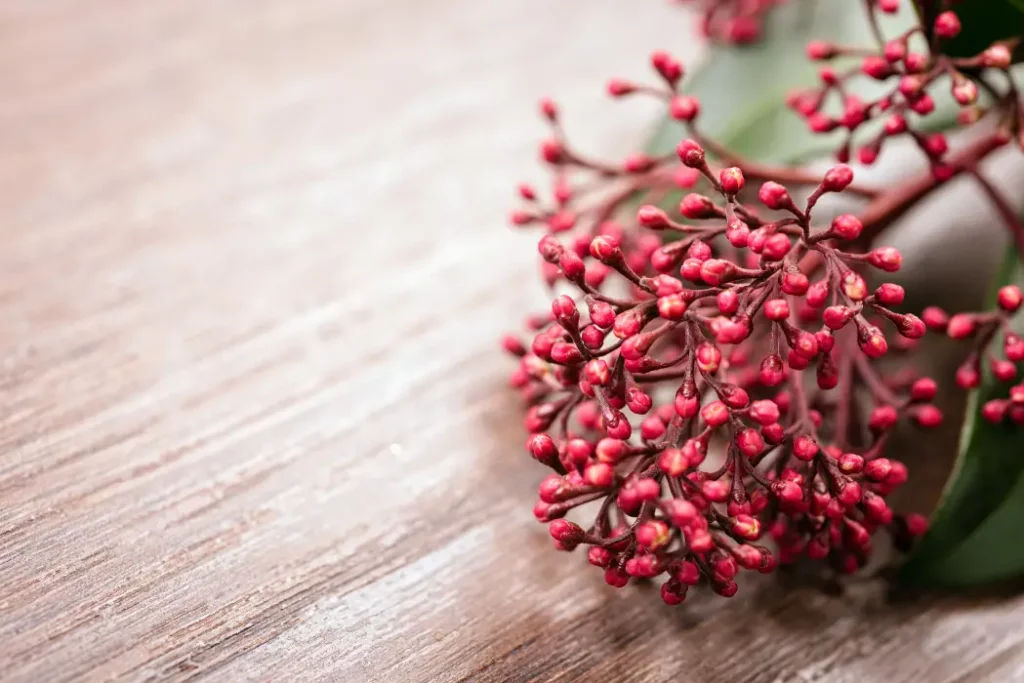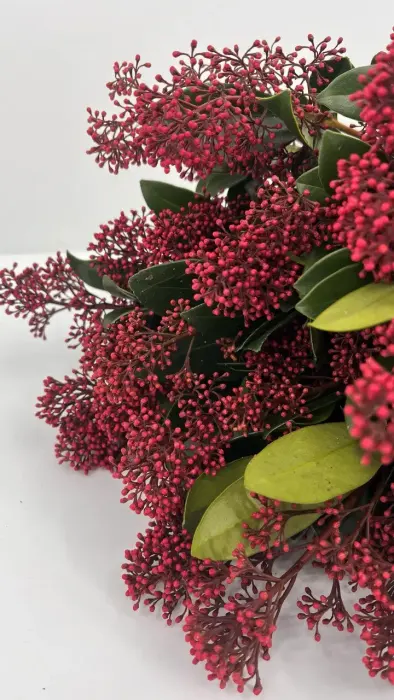Skimmia
| Name: Skimmia | Family: Rutaceae | Type Plant: Evergreen shrub |
| Flowering time: Winter to early spring | Best time to buy: Winter to early spring | Max Height: 30-60 cm |
| Sun/Shadow: Prefers partial shade |

Origin
Skimmia is a flowering shrub native to Asia, primarily from regions like China, Japan, and the Himalayas. It is a popular ornamental plant, especially in Europe, due to its vibrant berries and long-lasting blooms.
make it better – For floristic purposes, cut skimmia branches are ideal for bouquet compositions. This gives the arrangements an added charm due to volume and the skimmia berries’ colour.
For floristic purposes, cut Skimmia branches are perfect for bouquet compositions. Their volume and the vibrant color of the berries add extra charm to any arrangement, enhancing its overall appeal.
Appearance:
- Skimmia stems feature glossy, dark green leaves.
- Their flowers are small, dense, and form in clusters, with colours ranging from creamy white to pale pink.
- Some varieties, like Skimmia japonica, develop ornamental red berries (not edible).
Scent: A light, citrus-like fragrance from the flowers.
Versatility: Often used in bouquets, Christmas arrangements, or as fillers in floral displays due to their sturdy stems and long vase life.
Seasonality: Skimmia is available throughout much of the year, with peak popularity during autumn and winter due to its berries and rich foliage.
Care
Preparation:
- Remove any leaves that will sit below the waterline to prevent rotting.
- Recut stems at an angle under running water to maximise water uptake.
Water and Vase:
- Use clean water with floral preservative to keep the stems fresh.
- Change water every 2–3 days to prevent bacterial growth.
Placement:
- Keep in a cool spot, away from direct sunlight, heat sources, or drafts.
- Avoid placing near ripening fruit, as ethylene gas can shorten the life of the flowers.
Longevity:
- Skimmia stems can last easily 3 weeks in a vase with proper care.
Blooming time
Flowers: Skimmia flowers typically bloom in early to mid-spring, with buds forming in late winter. However, for cut stems, growers often harvest the buds just before blooming, ensuring a fresh appearance for arrangements.Berries: Female plants produce bright red berries that appear in autumn and winter, provided a male plant is nearby for pollination.






